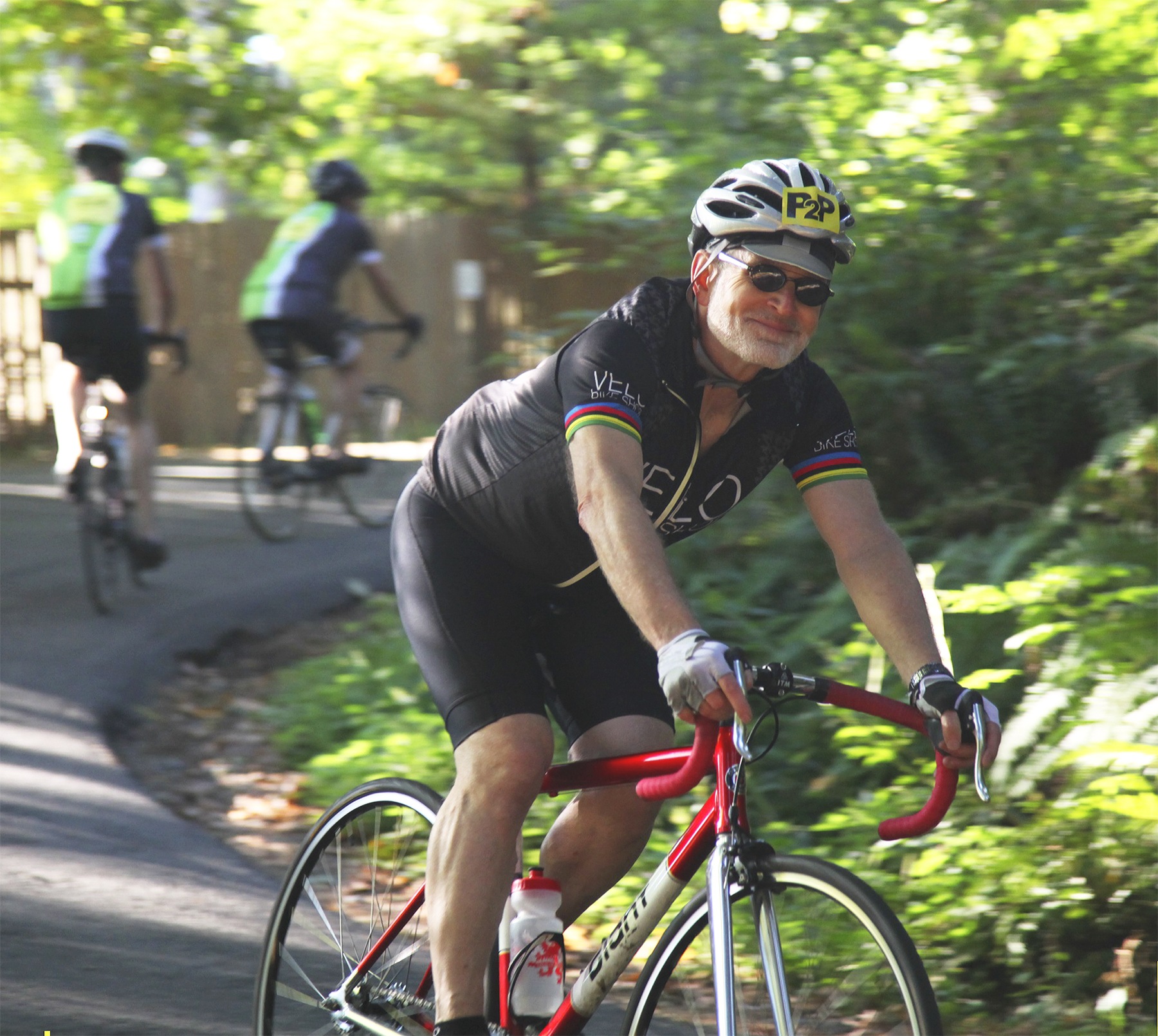*Editor’s Note: This story is the second in a series that will profile unique people and groups participating in the Passport to Pain ride this September.
While fixed-gear bikes have become extremely popular among young people in recent years, for Fred Strong, fixed-gear and single-speed bicycles carry with them the promise of a biking experience that is not possible with multi-geared bikes.
“The thing about fixed-gear is this feeling of oneness with the bike because everything you do with your body affects the bike. You have micro control over it,” he said.
In fact, he loves riding these bikes so much that he has taken on every Passport to Pain (P2P) since the event’s creation in 2011 in the saddle of either a fixed-gear bike (commonly referred to as a “fixie”) or a single-speed bike. He is continuing the tradition this year, chasing after the goal to finish the 80-mile “Idiot” course that gains 10,000 feet of elevation.
Strong, a former islander, finished the entire course once: in 2013 on his single-speed bike.
“I usually get 60 or 70 miles,” he said. “There are some spots I can’t do, usually four or five places where I have to walk my bike. I can’t do Burma (the steepest and toughest hill on the course).”
Strong said he has always been interested in fixed-gear bikes, but it was an island commuter he saw during his own bike commute when he lived on the island in 2011 who inspired him to get into the fixed-gear world of biking.
“I loved watching bike messengers in the city, and then I saw (islander) Max Slade, who commuted on a fixed gear. Watching him come off the ferry and ride up the hill, I realized it was doable,” he said. “I had just started riding a fixie and decided to try that for all my riding.”
Strong is a track racer; he races fixed-gear bikes on a velodrome. He was also a bike commuter, but hadn’t mixed the two worlds.
“It was super easy and a lot of fun,” he said of commuting on his fixed-gear bike.
When the P2P began that year, he decided to try the fixie on the hills of the brutal course.
It’s important to note that fixed-gear bikes are bikes that have the rear gear completely connected (fixed) to the back tire. The design prevents the back wheel from freewheeling — moving independently of the gear — so fixie riders need to pedal constantly, even downhill. Also, many do not have brakes. The bike was invented for track racing and was not used outside of that until recently.
“I realized very quickly that I was much more aware of my whole body,” Strong said. “I was thinking about my hands, my wrists, my ankles. A lot of people think that since it’s fixed, you’re just pounding up and down hills the whole time. That’s not the case. It’s an interesting way of riding and makes me think about how I shift the work around as I’m doing these crazy hills.”
Needless to say, his legs were done by the end of the ride.
“Your legs are always going,” Strong said. “That first year, I was really worn out.”
He made it 60 miles and climbed 8,000 feet of elevation.
P2P organizer Bruce Morser seconded the outcome of Strong’s first experience.
“You basically are using your legs as brakes, so the downhill is almost as hard as the uphill. It killed Fred,” he said.
With that experience behind him, Strong decided to ride future P2Ps on a single-speed bike, one that is locked in at a certain gear, but has a rear wheel independent from the gear. This means coasting downhill is possible.
For the P2P, he said his gearing is comparable to the middle range on someone’s geared bike.
“Not super high; not super low,” he said.
But, it’s important to note that someone can’t get the experience of riding a fixed- or single-speed bike by just riding their geared bike in only one gear.
“There are too many other variables at work in the build of the bike,” Strong said.
While the coasting allowed on the single-speed made the 2012 course slightly easier on his legs, he suffered a handlebar mishap that year after 60 miles.
“There was so much torque going up the hill from Point Robinson that it sheared right off,” he explained. “Bruce Morser happened to come through at that moment, looked at the situation and said something like, ‘You call that an excuse for quitting?'”
He came back with steel handlebars in 2013 and conquered the entire course. But the year after, he admits he was not in good enough shape and “konked out” after 54 miles and just under 6,000 feet of elevation gain.
Last year, he made it to Gold Beach: 72 miles
As for this year, he says he’s nervous because he hasn’t done his usual training yet: the 10 miles of road that wind up Mount Rainier from the White River campground to Sunrise. He usually rides it twice in a weekend, camping for one night in between the rides that gain around 3,000 feet each.
He’s planning to do the Mount Rainier ride soon, potentially as a “crash course” doing both rides in one day.
“I’m nervous (for P2P), I know what it’s like when I’m not in good enough shape,” he said last week.
He has about two weeks to prepare for the Sept. 10 ride.
“It’s a little insane, but it’s fun,” he said.



